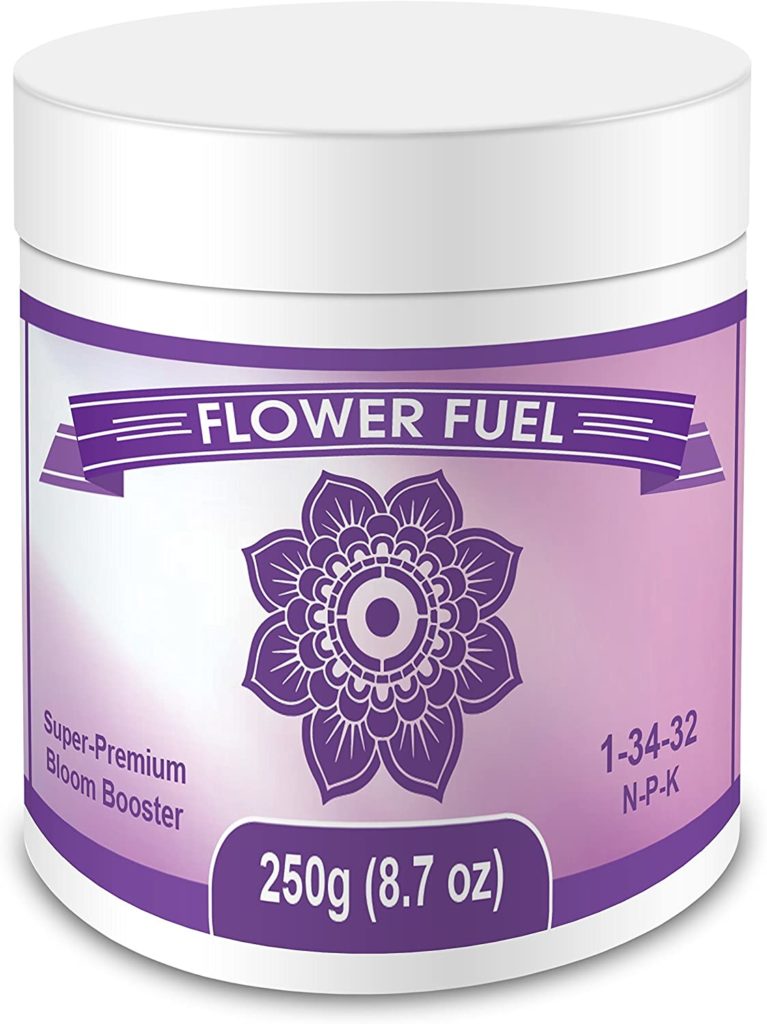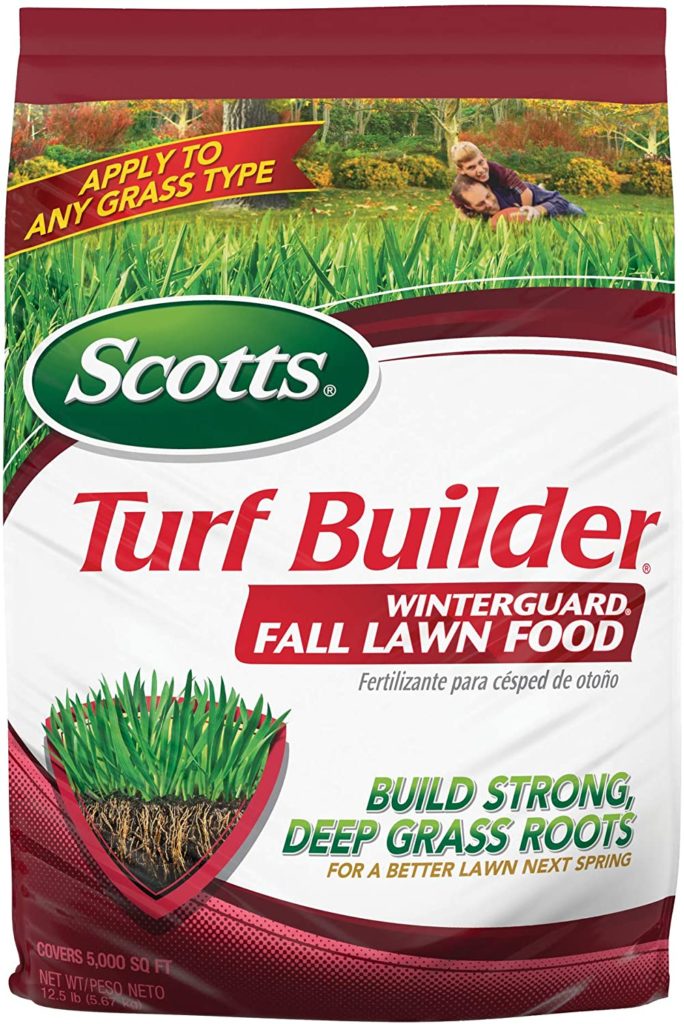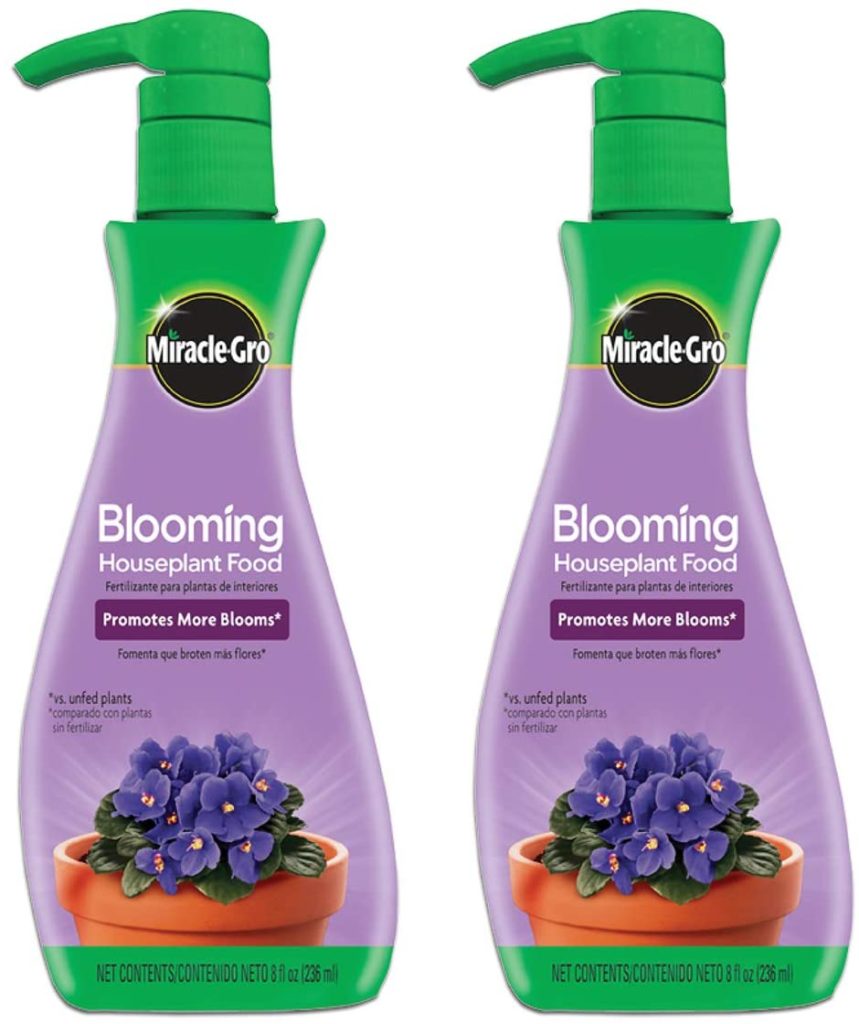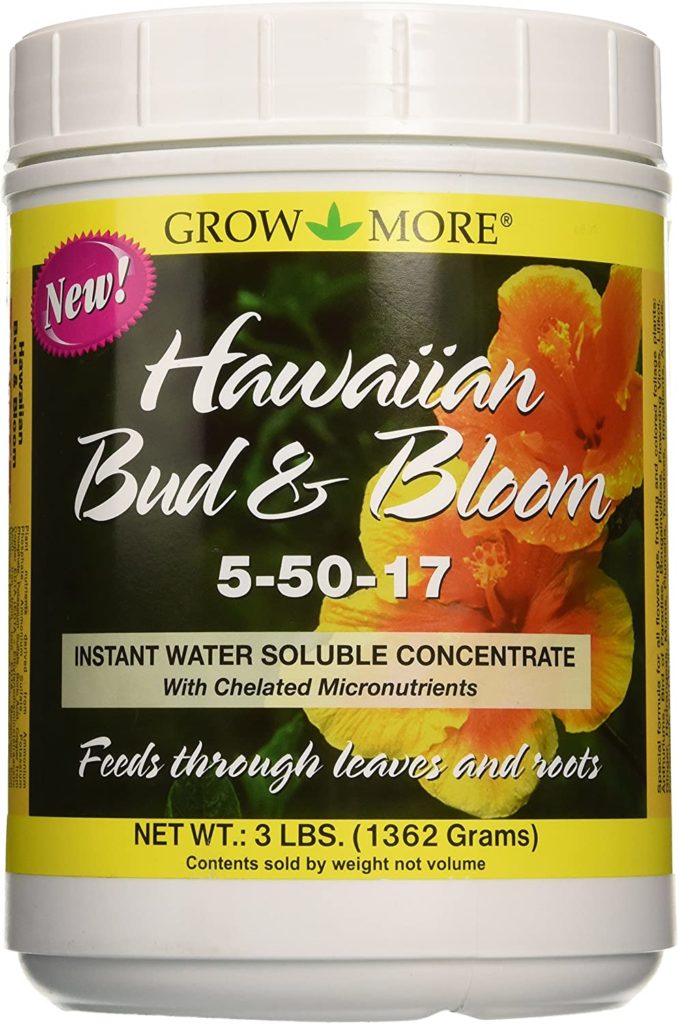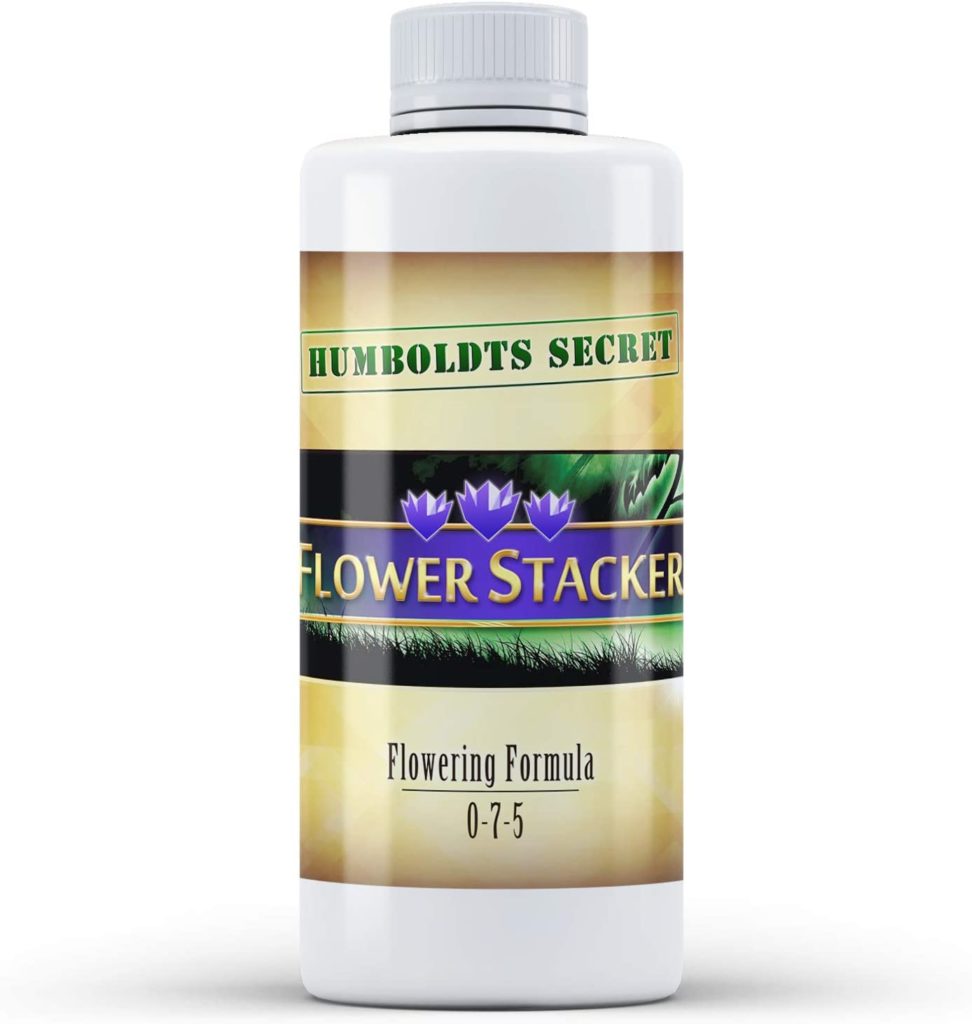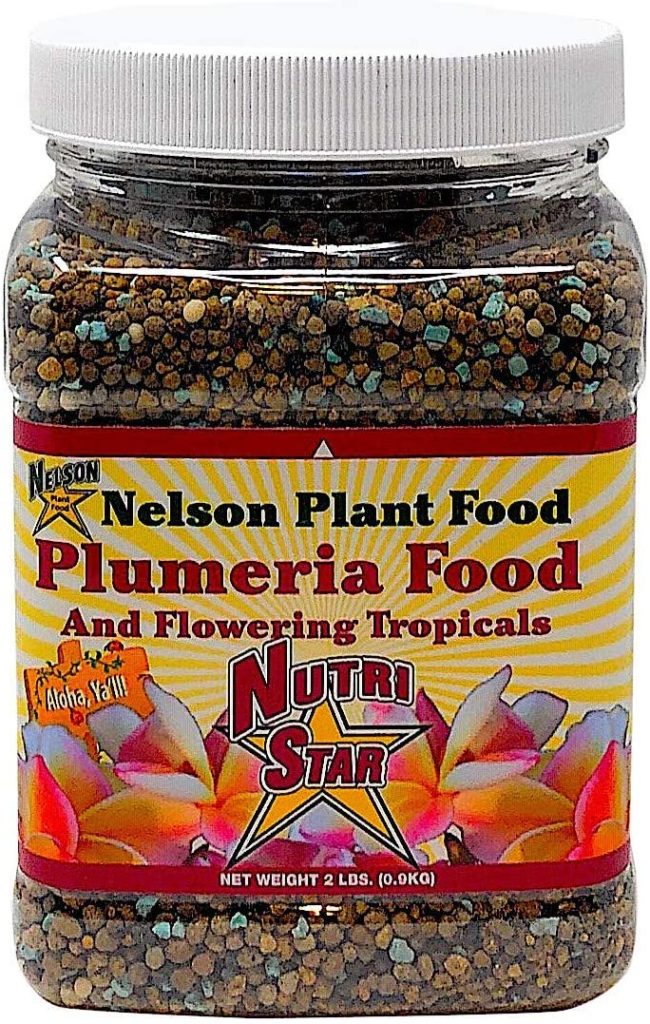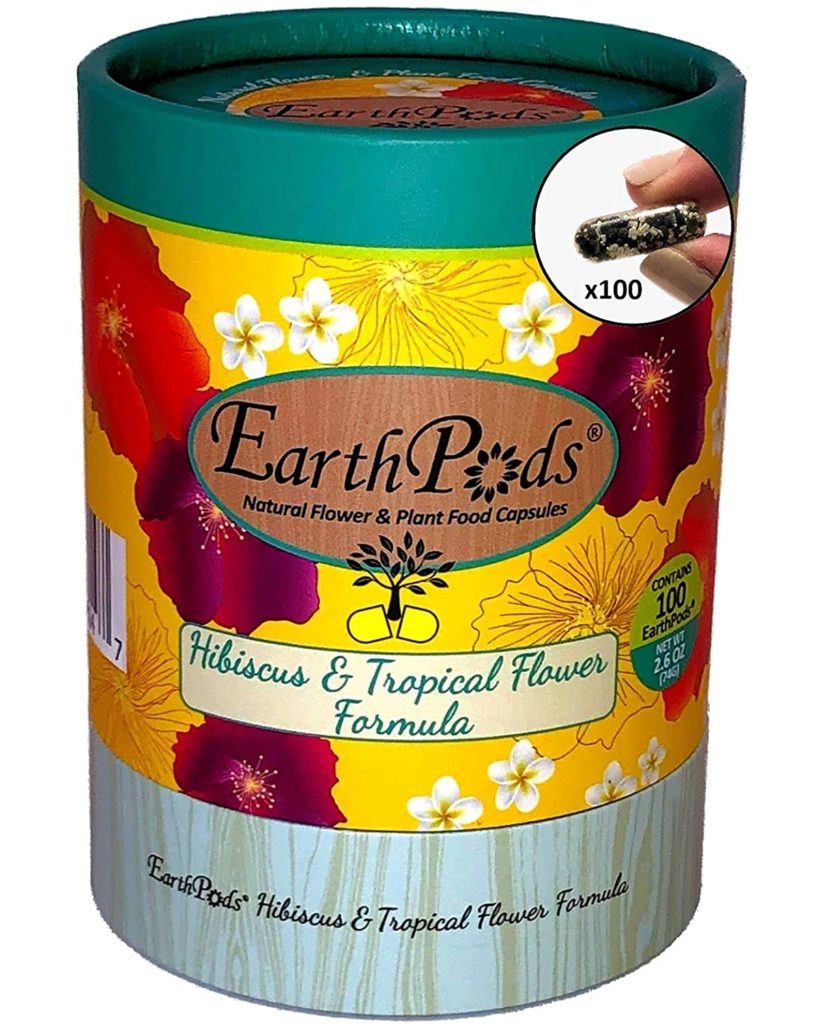Plumerias are tropical plants grown for their traditional Hawaiian lei blossoms, which are used in garlands and bouquets, and for their exquisite scent. Plumerias are also known as frangipani plants.
In addition to their alluring aroma, one of the primary factors contributing to their popularity is that they are resistant to a wide range of pests and need the use of high-quality fertilizers to flourish and improve their aroma.
The ideal fertilizer is the one that has a greater concentration of phosphorus than nitrogen and potassium. In addition, the best fertilizer for plumeria plants will include a variety of extra macro and micronutrients.
Plumerias are plants that have sturdy roots when they are grown in their native hardiness zones and are cultivated there. Because of the confinement, it may be difficult for them to bloom in pots, even in a tropical setting. The best fertilizer for Plumeria should have both macronutrients and trace elements, such as zinc, iron, manganese, and boron.
Micronutrients include calcium, magnesium, and sulfur. Furthermore, macronutrients include trace elements. They all positively impact plant health, notwithstanding the differing degrees to which they are included in a given formulation.
The Best Fertilizers That Are Most Effective For Plumeria
Phosphorus is essential for the growth of plumeria plants, which is why the middle number on fertilizer labels is given such importance. Phosphate-rich fertilizer should be given to your plumeria plants in order to encourage them to flower. In addition, you need to stay away from fertilizers that contain a lot of nitrogen since the first number on the packaging represents that component.
You should search for a component that has a healthy NPK ratio and high-quality individual parts. Fertilizing a garden on a recurring basis, on the other hand, might result in the accumulation of acid in the soil at levels that are potentially hazardous.
If the nitrogen content of the plant’s food is low, the diet will not stimulate the development of the plant’s leaves. The following are examples of some of the most effective fertilizers for Plumerias.
1. Flower Fuel 1-34-32 – Bloom Booster by Element Nutrients
For your plumeria, this is one of the best alternatives, despite its higher cost. This formulation is low in nitrogen, making it ideal for flowering plants like your plumeria. As a result, your plumeria will be able to focus more on producing flowers rather than growing leaves as a result of using this formulation.
Because it is water-soluble, it is beneficial to the plant throughout its whole life cycle, from the smallest cuttings, which may be grown in water, to the largest bushes.
Flower Fuel is a bloom fertilizer that is totally soluble in water and is designed specifically for use in hydroponic systems. It may be used in any soil, coco, hydroponic, or aeroponic system with any base nutrient, including all major two-part and three-part fertilizers.
Aeroponic systems are not compatible with this product. That is the one and only disadvantage: it is very concentrated.
Over 40 different kinds of flowers and plants go into the creation of flower fuel. These potent fertilizers include all of the trace elements that are necessary for the growth of healthy plants and are available to the gardener.
Features:
- NPK ratio: 1-34-32
- Incredibly high-quality hydroponics
- A water-soluble fertilizer for blooms
- Formulated with blossoming in mind
- Water-soluble
- Easy to use
- Hydroponic-grade
- Extremely powerful and with a high degree of concentration
2. Scotts Turf Builder WinterGuard Fall Lawn Food
Scotts Turf Builder WinterGuard Autumn Lawn Food is best sprayed in the fall. To ensure a more vibrant colorful plumeria, it grows strong and deep roots. This slow-release granular treatment helps feed your plumeria over the winter months since roots continue to grow during dormancy. As a consequence of summer’s heat, dryness, and activity, lawns are damaged and need nutrients in the fall to fix them.
This is a fantastic choice for anybody who wishes to be more accurate in addressing seasonal plumeria needs without having to put in too much effort to learn about the different species of plumeria they have.
Despite this, sandy soils may not hold as much nutrition as other types owing to the higher chance of leaching. The most common complaint is that customers aren’t seeing any results, which is fair if you already have a healthy lawn and are using this feed as part of your year-round lawn care routine.
Features:
- NPK ratio: 32-0-10
- Granular fertilizer
- Slow release
Direction for Usage:
September and October are often the best months to apply fall fertilizer, although the ideal time to fertilize might vary depending on the weather. Make it a point to finish fertilizing your lawn in the autumn at least two to three weeks before the ground freezes. This will guarantee that your grass receives the most benefit from the fertilizer and will protect it from any winter harm.
- Encourages the growth of strong, deep roots, which will result in healthier plants in spring
- Fertilizing your lawn in the fall is the most effective way to get it ready for the next growing season
- Provides nutrients that contribute to the process of repairing damage caused by heat, drought, and activity. As the roots are being toughened enough to withstand the severe winter weather
- When compared to a lawn that has not been fertilized, a lawn that has been fed is more able to absorb water and nutrients
- It has a coverage area of 5,000 square feet and may be used on any kind of grass
- There is a chance of being over-fertilized
- Is not effective on soil that is already nutrient-rich
3. Miracle-Gro Blooming Houseplant Food
This simple and low-cost solution is perfect for those of you who would want to cultivate plumerias in water. Because the ratio of 0.5-1-0.5 NPK components is reasonable, it may accelerate growth without causing delicate plants to fade away, making it an excellent medium for regeneration. Because they are one of the most trusted and well-known brands in the gardening industry, this is one of the recommended Miracle-Gro products even to the most expert gardeners.
This substance is specifically developed to create flowers, which is just one of the many ways it improves things. In addition, it has a rather elegant design, which is still another reason it is normally recommended for a spread. The packaging is by far the most significant disadvantage. It is important to clean the pump properly in order to avoid it from getting sticky or malfunctioning.
Features:
- NPK ratio: 0.5-1-0.5
- Liquid fertilizer
- Produces more flowers than plants that aren’t nourished
- Instantly feeds all flowering houseplants
Direction for Usage:
Apply to the soil or the soil directly in the container, and continue to water as you normally would. 2 pumps are required for smaller pots, whereas bigger pots with a diameter of more than 6 feet need 5 pumps. Rinse away any froth that may have accumulated on the foliage, but take care not to damp the African violet leaves. Make sure you apply it once a week, at the very least.
- Reputable producer
- It’s simple to use
- Perfect for spreading out
- Increases the rate at which a flower blooms
- Immediate outcomes
- The package might get sticky if it is not thoroughly cleaned
4. Grow More Hawaiian Bud and Bloom
Because of the high quantity of phosphorus it contains, Hawaiian Bud & Bloom is widely regarded as one of the best fertilizers for flowering plants. You should add this water-soluble fertilizer to your plumerias every time you water them. When water-soluble fertilizers are dissolved in water, it is much easier for plants to take up the fertilizer’s nutrients. As a direct result of this, blossoming plants will see an improvement right away.
There are a few different methods to administer this NPK fertilizer, including foliar feeding, spraying, and pouring it into the soil. This supplement contains both molybdenum and boron, two elements essential to the functioning of healthy plant systems and efficient photosynthesis, which are both present in the product. A synthetic fertilizer known as Hawaiian Bud & Bloom has all of the essential elements for growing plumeria plants.
In its chelated form, this fertilizer contains a variety of micronutrients, including copper, molybdenum, and zinc, amongst others. This method might be beneficial to a wide variety of plants, including hydrangea, anthurium, bougainvillea, birds of paradise, and other flowering plants with colorful leaves.
Features:
- NPK ratio: 5-50-17
- Concentration that is water-soluble and does not include urea
- Ideal for both soil and foliar usage
Direction for Usage:
Concentrated fertilizer should be mixed with water and sprayed on the plants’ leaves and soil every week until the leaves and soil get absorbed. It may also be used as a soil application by soaking the base of the plumeria in the solution.
- A wide range of nutrients may be readily absorbed by plants
- Phosphorus concentration is quite high
- Optional methods of feeding
- Packaging that is re-sealable
- No smelly odor
- Contains Molybdenum, which is poisonous to several helpful insects
- Synthetic fertilizer
5. Humboldt’s Secret Flowering Flower Stacker
This fertilizer is suitable for use in the cultivation of any plant. Your plumerias are covered with an incredible number of blossoms. Even newly harvested transplants might stand to gain from using the 0-7-5 formula. Due to the fact that it is liquid, it will not harden into a crust on the soil, which will prevent your plumeria from properly absorbing nutrients.
Because it is of hydroponic quality, you may use it to start new plants from cuttings in water. This would work well for a plant kept indoors. Only one of these little bottles may provide at least 29 gallons of the finished product. The mild nutritional profile and the convenience of the little bottle make it an excellent choice for a plumeria that is grown in a container.
However, the lack of nutritious value is the most significant downside. It’s possible that this is too light for a plant that’s used to being fertilized with a heavier substance, in which case you should look for something more substantial.
Features:
- NPK ratio: 0-7-5
- Liquid fertilizer
- High phosphorus and potassium content
- Is high in nutrients with b1
- Improve yields by up to 30%
Direction for Usage:
After shaking the bottle, measure out between 3 and 8 milliliters for each gallon of water. Pour Flower Stacker into a full watering can or reservoir and swirl to completely blend. For best results, apply to the root zone and feed with each or every watering starting in the third week of flowering.
- Hydroponic grade
- Easy-to-use plant food for seedlings
- It is possible to use for the purposes of propagation
- Phosphorus-rich
- For hardier plants, the formula might be too soft
6. Nelson Plumeria Plant and All Flowering Tropical Food
Nelson has long been regarded as the most superior plumeria feed available on the market due to its 5-30-5 NPK composition, exceptional slow-release granules, and one-time annual application. There’s a good reason why it’s been around for such a long time.
However, it’s the plumeria feed that sells the most. The usage of this NPK fertilizer, which has a ph. of 5-30-5, is very beneficial to the cultivation of plumeria flowers.
The NutriStar from Nelson is effective for tropical plants since it modifies the soil under perfect growing conditions. Iron has an important role in the formation of chlorophyll and the process of respiration in plants.
Last but not least, calcium plays a role in the formation of the cell walls of plants. In spite of the fact that it is designed specifically for plumerias, the inappropriate use of this inorganic fertilizer has the potential to cause damage to the plants.
There is a possibility that both youngsters and pets will pose a danger. In addition to plumeria, various other tropical flowering plants, such as the Lei Plant, Ground Orchids, Tree Ferns, Peace Lily, Crotons, Plumbago, Mexican Firebush, Candletree, and Ixora, may enjoy the benefits of this product.
Features:
- Granular fertilizer
- Slow-release fertilizer
- NPK ratio: 5-30-5
Direction for Usage:
It is recommended to apply 100 grams of fertilizer per 10 square feet of the plant’s surface and one teaspoon in every one-gallon container. The plant should now be well-watered, and this application should be repeated 14 days later throughout the growing season. For larger containers, see the label for doses.
- The ideal ratio of NPK
- Slow-release granular food
- Designed for plumeria but can be used on any blooming plant in the garden
- Fast absorption and non-burning formula
- It doesn’t have a horrible odor
- Hazardous to pets and people
- Fertilizer synthetic
7. EarthPods Premium Hibiscus & Tropical Flower Plant Food
Your plants may benefit from the usage of EarthPods, which are an organic fertilizer that is easy to apply. You can be certain that your plumeria plants will get consistent nourishment if you use a slow-release fertilizer spike such as EarthPods Premium Hibiscus & Tropical Flower Plant Food Spikes. These spikes are available on Amazon.
The nutrients included in this fertilizer come in the form of capsules, and they are released into your plants when you water them. Customers could take comfort in the fact that EarthPods are manufactured using components that are reminiscent of forest and soil.
Utilizing organic resources makes it possible to cultivate plants in a way that is less detrimental to the surrounding ecosystem.
The formulation may also be beneficial to plants in other ways, such as increasing the color of flowers and leaves, as well as increasing the formation of root systems. As a consequence, plumeria suffers less stress from being transplanted, and it also becomes more resistant to disease and pests.
Features:
- NPK ratio: 2-2-5
- Form: Capsules
- This is a Multi-Purpose Mix
Direction for Usage:
For each plumeria, you only need 1 or 2 capsules once every two weeks or for up to 21 days. Once you begin watering them, the nutrients will begin to flow. When it comes to applying them to your plants, you have two choices. Depending on the amount of topsoil you have, you may either use one or two EarthPods fertilizer capsules.
Adding 1-2 capsules of lukewarm water to the plant’s watering container dissolves and stirs the capsules. This organic fertilizer can be used both inside and outdoors due to its simplicity of use and natural composition. It’s also environmentally friendly.
- There’s no terrible odor here
- Fast and simple, with no need for measurements
- Eco-friendly
- Organic
- Slow-release fertilizer that may be applied to specific areas of the field
- It’s a little pricey
- Mostly for foliage, but also good for flowers
Frequently Asked Questions:
Depending on the kind and quantity of fertilizer used, it is suggested to fertilize once every two to four weeks throughout the growing season. For MiracleGro, you only need to apply for it once a month. For granular fertilizers, you should do so every six weeks.
If your Plumeria isn’t producing leaves, it might be a sign of water or nutritional stress. Pre-dormancy or faux dormancy may occur in plumerias and other succulents if they are underwatered or deficient in nutrients. This means that the plants will stop blooming and begin to lose their leaves.
A well-balanced time-release fertilizer may be used for overall plant health, although a higher phosphorus content can help with flowering. Despite the fact that this is one of the reasons why Plumeria hasn’t bloomed in a few years, you should prune these plants in the winter.
Cuttings of Plumeria will benefit from the application of rooting hormone as soon as the cuttings have been taken, but they should not be fed with anything other than water until the roots have been established. It is best to wait two weeks after transplanting Plumeria cuttings in the soil before fertilizing them.
It is best to avoid fertilizing Plumeria in dry soil for two reasons,
You run the danger of wasting your feed since dry soil does not retain water. If the soil is dry, then the plant’s roots will absorb nutrients more quickly since they will be parched. However, this might be harmful to the plant.
Using a phosphorus-rich fertilizer can help Plumeria develop stronger buds that will stay on the plant for a longer time if treated regularly throughout the year. You should stop watering only when the Plumeria begins to set its leaves in the autumn. During the winter, Plumeria should get no nutrients at all.
Conclusion
Your Plumeria needs phosphorus-rich organic liquid fertilizers once the blooms have faded and the plant has gone dormant, but keeping proper drainage will help you keep a consistent feeding schedule for your tropical plants. Rock phosphate, which Mother Nature has generously supplied for us to use without cost, is one of the best fertilizers for plumerias that can be purchased.
In order to appreciate these blooms that Plumeria produce, it is essential that you provide them with regular feedings, use high-quality potting mix and fertilizer, and ensure that they get enough water.

